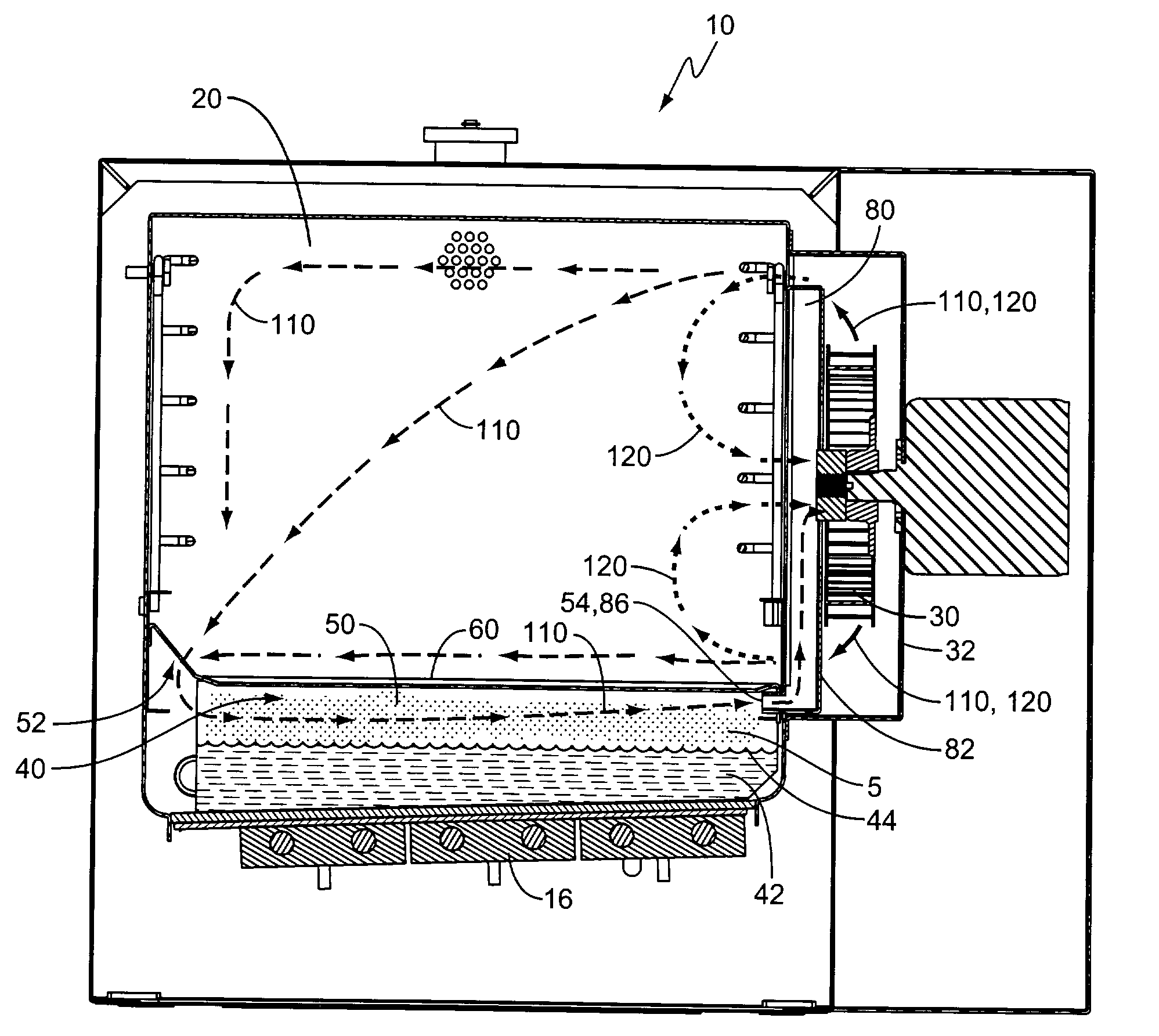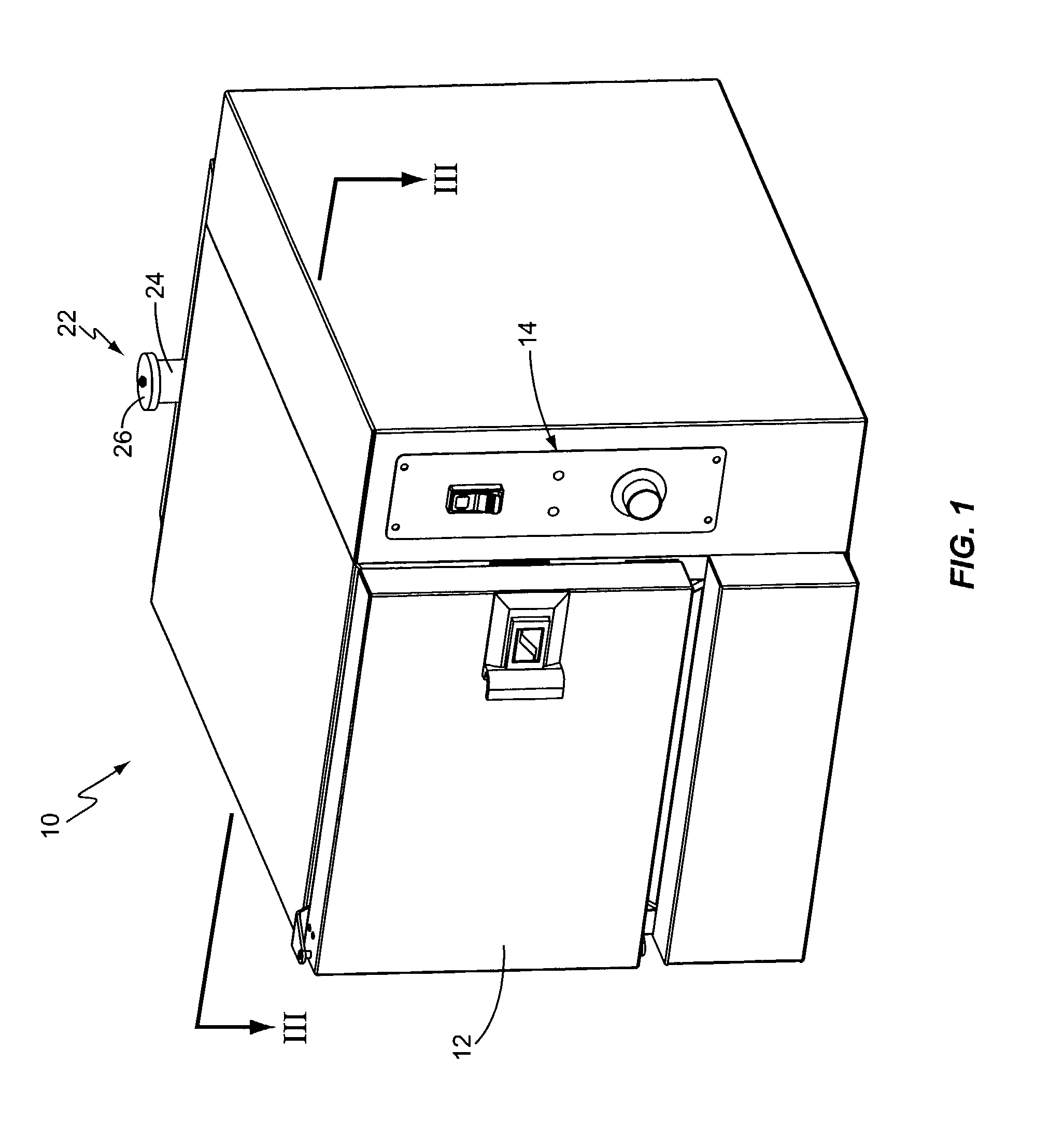Convection steamer with forced recirculation through steam bath
- Summary
- Abstract
- Description
- Claims
- Application Information
AI Technical Summary
Benefits of technology
Problems solved by technology
Method used
Image
Examples
Embodiment Construction
[0011]One embodiment of a cooking device according to the present invention, sometimes referred to herein as a convection steamer, or simply a steamer, is shown in FIGS. 1–2 and generally indicated at 10. From outward appearance, the steamer 10 may appear similar to steamers currently available on the market. Indeed, as is typical for such devices, the steamer 10 includes a latched door 12 for providing access to the cooking cavity 20 (see FIG. 2) and controls 14 to control the operation of the steamer 10. The controls 14 may take any form known in the art, and typically include an on / off switch, indicator lights, a timer and / or thermostat, and other suitable electronics. The electronics of the controls 14 may be segregated from cooking cavity 20 and may be advantageously vented to the ambient atmosphere for cooling. The cooking cavity 20 typically takes the form of a substantially rectangular chamber with racks for supporting food trays as is known in the art. In the present invent...
PUM
 Login to View More
Login to View More Abstract
Description
Claims
Application Information
 Login to View More
Login to View More - R&D
- Intellectual Property
- Life Sciences
- Materials
- Tech Scout
- Unparalleled Data Quality
- Higher Quality Content
- 60% Fewer Hallucinations
Browse by: Latest US Patents, China's latest patents, Technical Efficacy Thesaurus, Application Domain, Technology Topic, Popular Technical Reports.
© 2025 PatSnap. All rights reserved.Legal|Privacy policy|Modern Slavery Act Transparency Statement|Sitemap|About US| Contact US: help@patsnap.com



